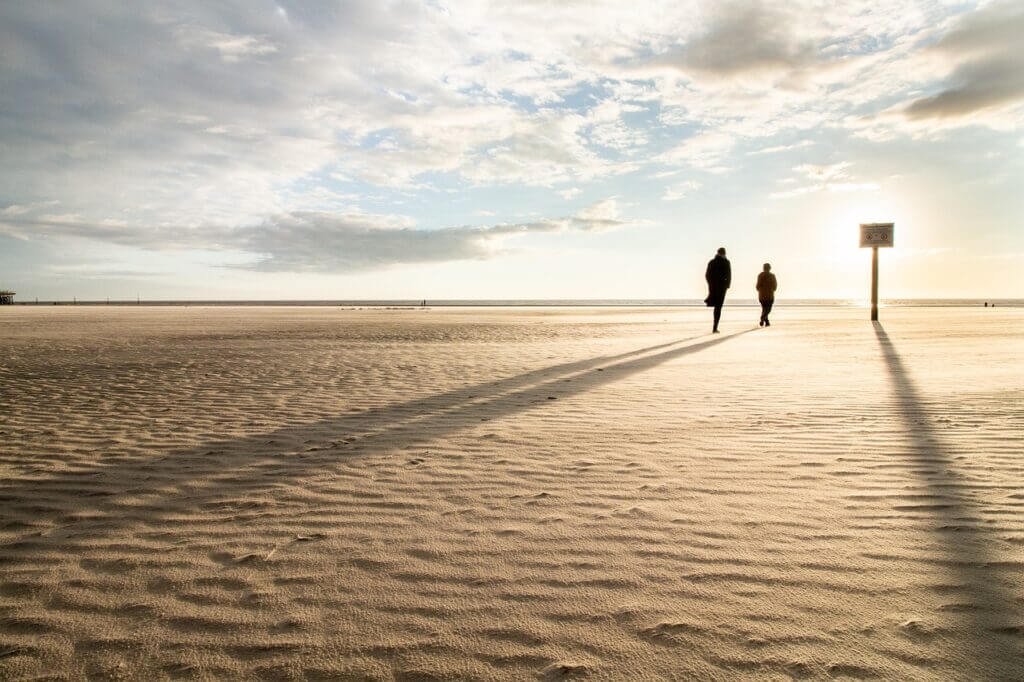Planning a trip to coastal Florida? Wondering when is the ideal time to visit this stunning destination? Look no further! In this article, we will explore the best times to visit coastal Florida for tourism. Whether you’re looking for beautiful beaches, vibrant nightlife, or a chance to witness awe-inspiring wildlife, we’ve got you covered. So pack your bags, put on your sunscreen, and get ready to embark on an unforgettable adventure along Florida’s breathtaking coastline.

Spring Season
The spring season in coastal Florida spans from March to May. This is a great time to visit as the weather is mild and pleasant, with temperatures ranging from the mid-60s to the high 70s. The days are longer, providing ample daylight to explore the beautiful beaches, enjoy outdoor activities, and soak up the sun. The ocean water starts to warm up during this season, making it ideal for swimming and water sports. Additionally, spring is known for its vibrant floral displays, as the flora blooms and colors the landscape with a burst of life. It’s the perfect time to witness the beauty of nature while taking leisurely walks or bike rides along the coastal paths.
March
March marks the beginning of the spring season in coastal Florida. The weather starts to warm up, and the chances of rainfall decrease as compared to the winter months. This is an exciting time for nature lovers, as the coastal areas begin to come alive with the blooming of flowers and trees. The beaches are less crowded in March, offering a more relaxed and peaceful atmosphere. Visitors can enjoy beach walks, collect seashells, or simply bask in the sun without the hustle and bustle of peak tourist season. March also coincides with Spring Break for many schools, attracting a younger crowd and livelier vibe to the coastal towns.
April
April is an ideal time to visit coastal Florida if you prefer a slightly warmer and sunnier weather. The average temperatures during this month range from the low to mid-70s, making it perfect for outdoor activities such as golfing, kayaking, or fishing. The beaches are inviting, and you can spend lazy afternoons sunbathing or building sandcastles with your family. April also brings with it various festivals and events, such as seafood festivals, art shows, and live music performances, adding an extra dose of fun and entertainment to your visit.
May
May marks the end of the spring season in coastal Florida. The temperatures continue to rise, reaching the high 70s, and the chance of rainfall increases slightly. However, this shouldn’t deter you from visiting, as May offers many advantages. The tourist crowds are thinner compared to the upcoming summer months, allowing you to enjoy the beaches and attractions with more space and tranquility. The water temperature continues to climb, becoming more comfortable for swimming, snorkeling, and other water activities. As May also includes Memorial Day weekend, many families opt to kick off their summer vacations during this time, creating an energetic and festive atmosphere.
Summer Season
The summer season in coastal Florida spans from June to August, offering plenty of sunshine and warm temperatures. This is the peak tourist season, as families flock to the beaches for summer vacations and beachside fun. The temperatures during this time can soar into the high 80s and low 90s, making it perfect for those seeking a sun-drenched getaway. The ocean water is at its warmest, providing a refreshing respite from the summer heat. It’s important to note that summer is also the rainy season in coastal Florida, with afternoon thunderstorms being a common occurrence. However, these rain showers are typically short-lived and quickly give way to clear skies.
June
June is the start of the summer season in coastal Florida and marks the beginning of school vacations for many students. The beaches become vibrant and lively, buzzing with families, friends, and vacationers from all over the world. The temperatures are warm, ranging from the mid-80s to low 90s, creating the perfect conditions for swimming, surfing, and other water-based activities. June also offers longer days, allowing you to make the most of your time exploring the coastal towns, indulging in water sports, or simply lounging on the sandy beaches.
July
July is the prime time for summer vacations in coastal Florida. The temperatures are at their hottest, with highs often reaching the low 90s. This makes it an excellent time to hit the beaches and cool off in the refreshing ocean waters. With the school holidays in full swing, families can be seen enjoying picnics, building sandcastles, and playing beach volleyball. July also brings Fourth of July celebrations, with fireworks lighting up the night skies and adding to the festive atmosphere. It is important to stay hydrated and take precautions against the sun’s UV rays during this time of year.
August
August marks the end of the summer season in coastal Florida. The temperatures remain high, ranging from the mid to high 80s, making it a great time to enjoy the beaches, water parks, and other outdoor attractions. As the summer vacations wind down, the tourist crowds start to thin out, allowing for a more relaxed and laid-back experience. August is also a popular time for fishing, as various species are in abundance offshore and in the estuaries. Whether you’re a fishing enthusiast or simply looking to unwind on the sandy shores, August offers a fantastic opportunity to enjoy the natural beauty of coastal Florida.

Fall Season
The fall season in coastal Florida spans from September to November. This is a transitional period from the summer heat to milder temperatures, making it an ideal time for outdoor activities and exploration. The humidity begins to subside, providing a more comfortable atmosphere for visitors. Fall is known for its stunning sunsets, as the sky transforms into a breathtaking palette of vibrant oranges, pinks, and purples. The beaches are less crowded, allowing for a peaceful and serene experience while enjoying the coastal beauty.
September
September is the beginning of fall in coastal Florida, and the temperatures slowly start to cool down. The average temperatures range from the low to mid-80s, providing pleasant weather for outdoor activities such as hiking, biking, and birdwatching. The beaches are still warm, and the water temperatures are comfortable for swimming and snorkeling. September is also the start of the off-peak season, meaning fewer tourists and more affordable accommodations. This makes it an ideal time to visit if you prefer a more tranquil and budget-friendly experience.
October
October brings cooler temperatures to coastal Florida, with highs averaging in the mid to high 70s. This makes it an excellent time for exploring nature trails, visiting state parks, and enjoying outdoor festivals in the coastal towns. The fall foliage starts to make an appearance, adding a touch of color to the landscape. The beaches are less crowded, allowing for peaceful walks along the shore and plenty of space to relax. October is also a great time for fishing, as many species are active and plentiful in the coastal waters.
November
November marks the end of the fall season in coastal Florida, with temperatures gradually dropping into the mid to low 70s. The humidity decreases further, providing comfortable conditions for outdoor activities and sightseeing. The beaches remain inviting, and you can still enjoy swimming, sunbathing, and beachcombing. November is an excellent time for wildlife enthusiasts, as bird migrations take place, attracting a variety of species to the coastal areas. Whether you enjoy birdwatching, photography, or simply connecting with nature, November offers a fantastic opportunity to witness the beauty of coastal Florida’s wildlife.
Winter Season
The winter season in coastal Florida spans from December to February. While the temperatures may be lower than other seasons, it is still a pleasant time to visit, especially for those seeking a milder winter climate. The average temperatures range from the mid-60s to low 70s, providing a break from colder northern climates. Winter is also known for clear skies and sunny days in coastal Florida, making it an ideal time for outdoor activities and exploration. The tourist crowds are thinner during this time, allowing for a more intimate and peaceful experience.
December
December marks the beginning of the winter season in coastal Florida and is a popular time for holiday vacations. The temperatures are mild, ranging from the low to mid-70s, providing a pleasant and comfortable atmosphere. The holiday season brings festive decorations, twinkling lights, and various events and activities throughout the coastal towns. December is an excellent time to enjoy the beaches, visit scenic parks, and explore the charming coastal communities. Whether you’re looking to relax or embrace the holiday spirit, coastal Florida offers a wonderful winter escape.
January
January is the heart of winter in coastal Florida, with temperatures averaging in the mid-60s. While it may be colder than other seasons, the weather is still mild compared to many other parts of the country. This makes it a prime time for outdoor activities such as golfing, fishing, and boating, as well as exploring the abundant nature trails and wildlife areas. The beaches are quieter, allowing for peaceful walks along the shore and a chance to collect seashells. January also offers opportunities to witness unique natural phenomena, such as manatees seeking warm waters in coastal springs.
February
February marks the end of the winter season in coastal Florida, with temperatures gradually increasing into the low 70s. The days become longer, allowing for more daylight to explore and enjoy the coastal beauty. February is an excellent time for whale watching, as many migratory species can be spotted offshore. The beaches start to come alive, attracting visitors and locals looking to soak up the sun and partake in water sports. Whether you’re seeking outdoor adventures or simply looking to relax on the sandy shores, February offers a wonderful winter getaway in coastal Florida.

Spring Break
March and April represent the traditional spring break period, and coastal Florida is a popular destination for students and families during this time. The beaches and coastal towns come alive with a youthful energy, as visitors from all over flock to enjoy the sun, surf, and vibrant atmosphere. The temperatures are mild and perfect for outdoor activities, and the water temperatures continue to rise, making it ideal for swimming and water sports. While spring break can bring larger crowds, it also adds a lively and festive vibe to the coastal communities.
Hurricane Season
Coastal Florida experiences the hurricane season from June 1st to November 30th. During this period, there is a heightened risk of tropical storms and hurricanes forming in the Atlantic Ocean and potentially affecting the coastal areas. It’s essential for visitors to be aware of the weather conditions and stay updated on any storm warnings or advisories issued by local authorities. While the chances of encountering a hurricane or major storm are relatively low, it’s always a good idea to have a contingency plan and be prepared in case of any severe weather events.
Off-Peak Season
The off-peak season in coastal Florida runs from September to November. During this time, the tourist crowds begin to diminish, and the coastal towns become more tranquil and relaxed. The weather is still pleasant, with mild temperatures ranging from the mid-70s to low 80s, making it enjoyable for outdoor activities and exploration. The beaches are less crowded, allowing for a more peaceful experience to unwind and soak up the coastal beauty. Additionally, accommodations and attractions often offer discounted rates during the off-peak season, making it a budget-friendly time to visit coastal Florida.
Peak Season
The peak season in coastal Florida spans from December to April, encompassing the winter months and early spring. This is the most popular time for tourists to visit, as many seek to escape colder climates and enjoy the milder winter temperatures of coastal Florida. The weather is pleasant, with mild temperatures ranging from the mid-60s to mid-70s, providing perfect conditions for outdoor activities. The beaches are inviting, and the coastal towns offer a variety of events and festivals to entertain visitors. It’s important to note that peak season brings larger crowds and higher accommodation rates, so it’s advisable to plan and book in advance for a smoother and more enjoyable experience.
Summer Vacation
For many families, summer vacation is the perfect time to visit coastal Florida and enjoy all the fun activities and attractions it has to offer. The summer months of June to August provide the ideal conditions for beachside relaxation, water sports, and outdoor adventures. The temperatures are at their warmest, ranging from the mid-80s to low 90s, allowing for plenty of sun-soaked days on the sandy shores. The ocean water is also at its warmest, making it perfect for swimming, boating, and snorkeling. Summer vacation in coastal Florida creates lasting memories and offers a wonderful opportunity to bond with loved ones while embracing the joys of summertime.
Holiday Season
The holiday season in coastal Florida is a special time filled with festive cheer, unique events, and a magical atmosphere. December is the pinnacle of the holiday season, with various coastal towns decorating their streets, parks, and beaches with twinkling lights and colorful displays. Many holiday-themed events take place, including parades, concerts, and firework shows, adding an extra dose of joy and merriment to your visit. Coastal Florida offers a unique way to celebrate the holidays, with warm temperatures, sandy beaches, and a relaxed coastal vibe. Whether you’re seeking a traditional holiday experience or a tropical twist, coastal Florida is an enchanting place to spend the holiday season.


